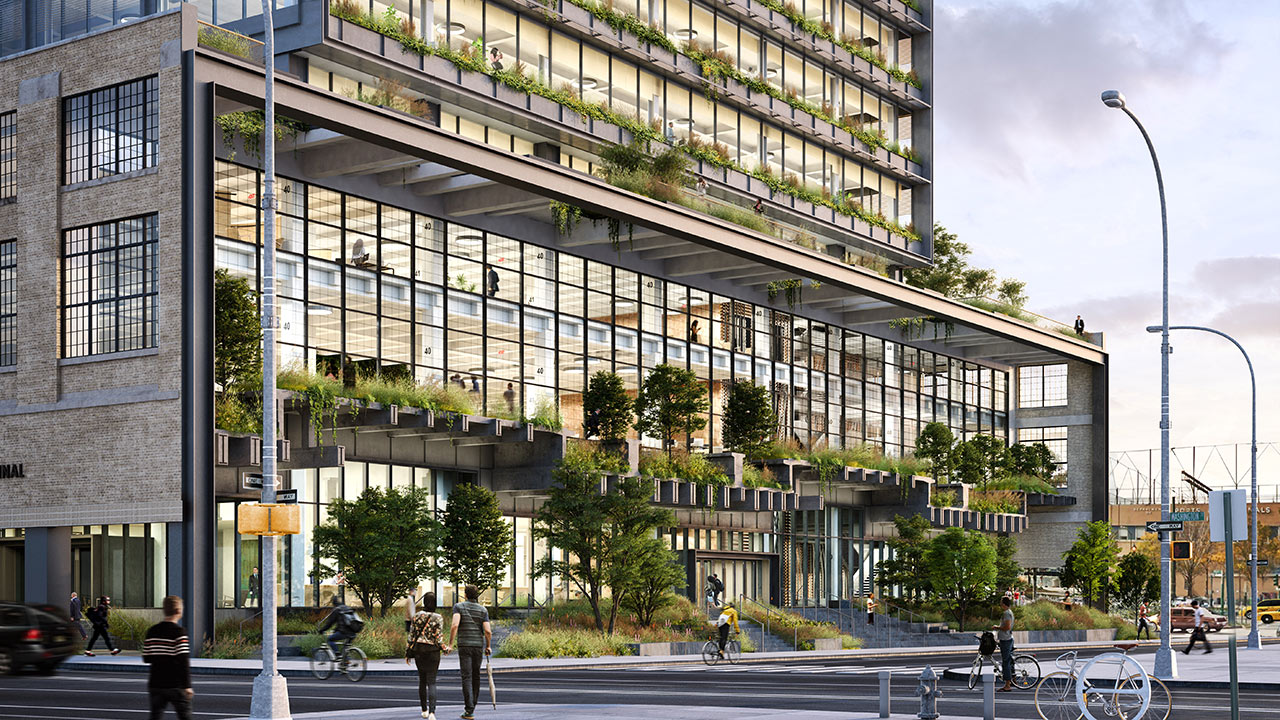
Challenge
Cosentini, part of the Tetra Tech High Performance Buildings Group, collaborated with COOKFOX and Oxford Properties Group to transform St. John’s Terminal into a future-focused workplace prioritizing occupant health and wellness. Originally built in 1934 as the terminus of the New York Central Railroad’s West Side freight line, the historic building presented unique challenges for revitalization.
Solution
Transforming St. John’s Terminal into a nature-inspired workplace with a healthier indoor environment presented a unique challenge for Tetra Tech. We provided HVAC upgrades with highly filtered air, UV-C lamps, and increased ventilation. Energy-efficient enhancements included a new chiller plant, ice storage, and energy recovery units. Collaborating closely with the architect, our team preserved the design intent while meeting LEED Platinum standards. We also implemented sustainable features such as a high-performance facade, rainwater capture, native plant selections, and advanced irrigation. As the commissioning agent, Tetra Tech ensured the proper design, installation, and testing of mechanical, electrical, and plumbing (MEP) systems while delivering training verification and documentation for facility operation and maintenance.
Benefits
The revitalized St. John’s Terminal offers significant benefits to its occupants and the environment. Biophilic design principles have been incorporated, allowing occupants to connect with nature through increased daylighting and panoramic views of the city and river. The implementation of a double-wall curtain wall with integrated shading results in estimated annual energy savings of one million kilowatt hours (kWh) compared to a typical facade. The project has a 39.2 percent reduction in energy costs compared to the ASHRAE Standard 90.1-2010, Appendix G baseline. Furthermore, a water-use reduction of 36.7 percent has been accomplished through the use of high-efficiency plumbing fixtures. These quantitative and qualitative benefits showcase the success of the project in creating a forward-thinking sustainable workplace of the future, promoting occupant well-being and environmental responsibility.
St. John’s Terminal achieved LEED Platinum certification.
At a glance
Client
Architect
Completion date
2022
Services
Project by
Cosentini
